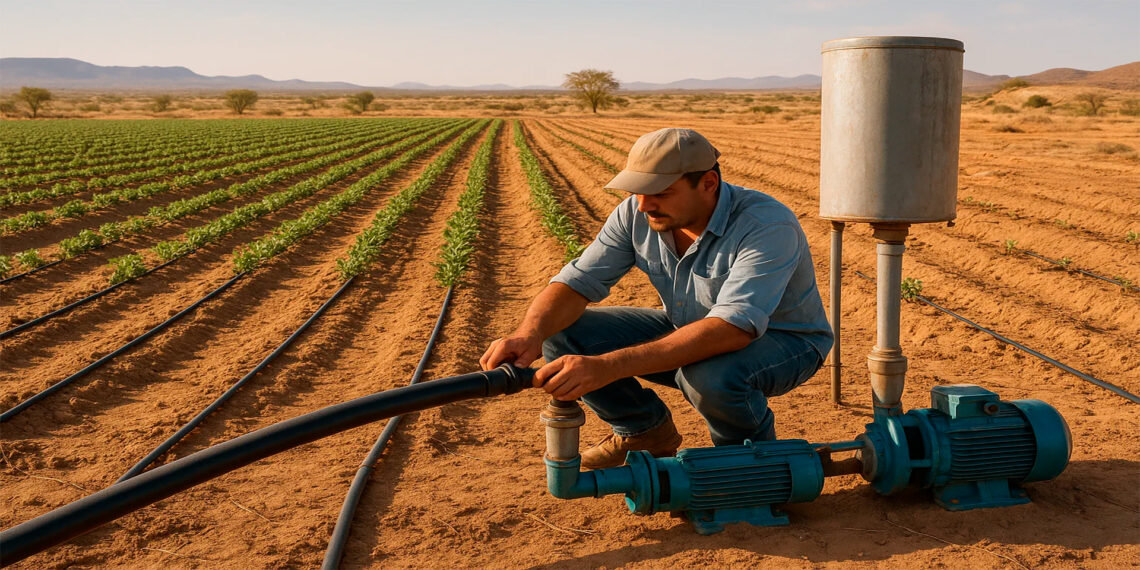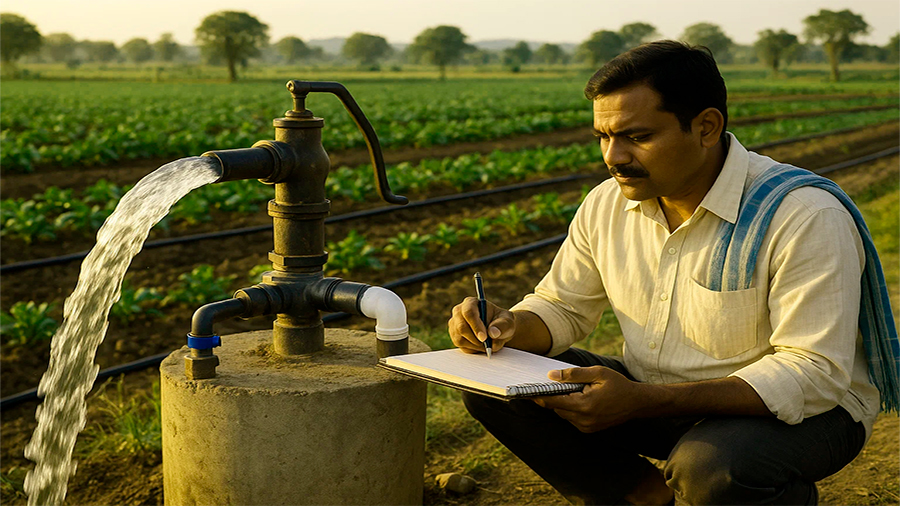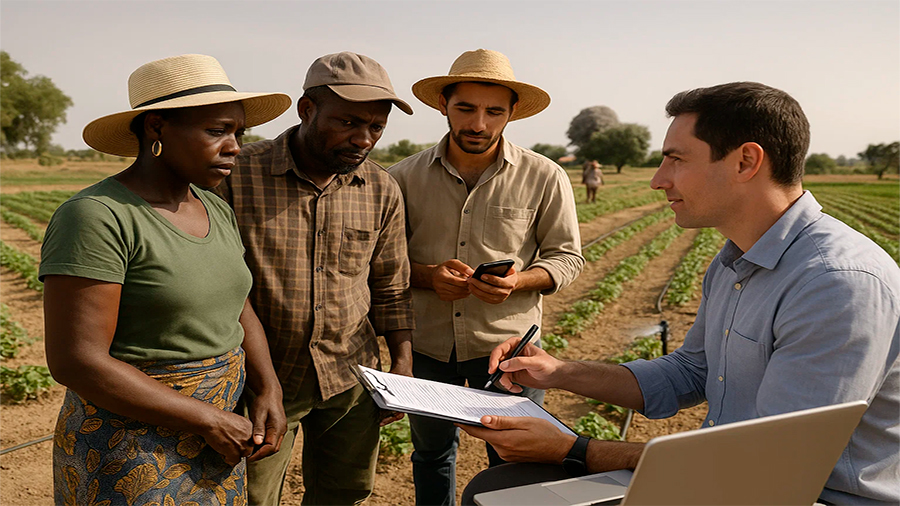
Farming in Arid Regions: How Loans Support Irrigation Development
In arid regions, farming isn’t just a job — it’s a battle with nature. Rainfall is inconsistent, groundwater is scarce, and the heat strips away moisture faster than it arrives. For farmers trying to grow crops or raise livestock in these areas, success often depends on one thing: water. But reliable irrigation doesn’t come cheap. Pumps, pipes, drip systems, and storage tanks require significant investment, and for many small and medium-sized farmers, the upfront costs are impossible without financial help. That’s where loans come in — and when structured well, they can completely transform agriculture in dry zones.
Why Irrigation is the Lifeline of Dry-Climate Farming
In places where annual rainfall barely covers basic crop needs, irrigation isn’t a luxury — it’s a necessity. Arid zones across Africa, Asia, and the Middle East have long relied on rain-fed methods, but climate change has made those approaches too risky. Weather patterns are shifting. Rain comes late or not at all. Droughts last longer. Even crops adapted to dry environments are failing under extreme conditions. In this context, irrigation systems provide more than convenience — they offer predictability.
Access to water at the right time allows farmers to control planting schedules, choose more profitable crops, and reduce the risks of total loss. It also makes multi-season planting possible, significantly increasing productivity. But without credit access, most of the tools needed for these upgrades — drip lines, solar pumps, underground reservoirs — are out of reach.
Irrigation Systems Often Funded by Loans
- Drip and micro-irrigation kits for precision watering
- Solar-powered or hybrid pumps to replace diesel systems
- Large-capacity water storage tanks or lined ponds
- Subsurface irrigation channels and pressure regulators
These systems don’t just extend growing seasons — they redefine what farming is possible in hot, dry landscapes.

How Loans Unlock Irrigation Investment
Water solutions are often expensive up front but pay off gradually. That’s a mismatch for many farmers, especially those whose income depends on seasonal yields. Loans help bridge this gap. With financing, a farmer doesn’t have to choose between buying seeds and building a well — they can invest in infrastructure today and repay it over time, often after the upgrades have already improved their output and income.
Unlike short-term production loans used for inputs like fertilizer or pesticides, irrigation loans tend to come with longer terms and tailored repayment schedules. In some countries, grace periods allow farmers to start repaying only after the first harvest with the new system. Others structure repayments around seasonal cash flow rather than monthly installments. Public and donor-backed programs may offer reduced interest rates, loan guarantees, or partial subsidies to lower the cost barrier.
What Makes Irrigation Loans Unique?
- They’re designed for capital investment, not operating expenses
- Repayment is often aligned with agricultural seasons
- Some include built-in technical support and training
- Many are backed by green or climate adaptation funds
These elements make irrigation loans far more accessible than traditional bank credit, especially in regions where agriculture is seen as too risky.
The Real Impact: Yields, Income, and Water Use
The difference between farming with and without irrigation can be dramatic. Irrigation gives control. That control increases crop yields, allows planting of high-value crops like fruits and vegetables, and improves resilience during heatwaves or dry spells. Even conservative estimates show major gains in output and revenue after irrigation systems are installed.
In regions where farmers have adopted drip irrigation funded by loans, yields have risen by 30–60%, depending on the crop. For example, tomato farmers in southern India doubled their revenue per hectare after moving from flood irrigation to drip systems. In Morocco, citrus growers using solar-powered water pumps reduced energy costs by half and increased their export volumes.
| Farming Method | Water Use Efficiency | Average Yield Increase | Income Boost |
|---|---|---|---|
| Rain-fed | 35% | — | Baseline |
| Flood Irrigation | 50% | +20% | +15% |
| Drip Irrigation | 80% | +45% | +60% |
It’s not just about growing more — it’s about growing smarter. Precision irrigation ensures that water goes exactly where it’s needed, reducing waste and increasing consistency. That kind of efficiency matters in regions where every drop counts.

Barriers to Accessing Irrigation Loans
Despite the benefits, many farmers still can’t get the loans they need. In dry regions, the most common barriers are financial documentation, collateral, and information. Smallholders often lack credit history or land titles — two requirements many lenders demand. Others may be unfamiliar with formal banking or reluctant to take on debt due to unstable markets or past experiences with predatory lending.
Even when programs are available, complicated application processes or unclear eligibility criteria can discourage participation. Some farmers don’t apply because they think they won’t qualify. Others apply but get denied due to paperwork errors or unrealistic repayment conditions. And in areas with limited mobile coverage or banking infrastructure, even submitting an application becomes a challenge.
Major Obstacles Farmers Face
- Lack of land titles or acceptable collateral
- Low financial literacy or experience with formal loans
- Unfamiliarity with irrigation technologies
- High perceived risk from lenders due to drought or crop volatility
These challenges mean that many farmers who could benefit most from irrigation loans are the least likely to receive them.
Innovative Models Making Irrigation Loans Work
Across arid regions, new financing models are emerging to solve these problems. Some programs use group lending, where farmers apply as cooperatives and share risk. Others tie repayments to harvest cycles or use mobile platforms for easier tracking and disbursement. In Kenya, a “pay-as-you-grow” model lets farmers buy solar irrigation kits and pay in small amounts after each harvest via mobile money. In Tunisia, public-private partnerships are offering zero-interest loans to young farmers launching climate-smart farms.
What makes these models effective isn’t just better interest rates — it’s flexibility. Farmers are given the time, tools, and support to succeed before the repayment clock starts ticking. These programs often include bundled services: technical training, soil testing, and post-installation support. That increases success rates and repayment reliability, which in turn gives lenders more confidence to expand the programs.
| Country | Loan Model | Key Feature | Impact |
|---|---|---|---|
| Kenya | Mobile Microloan | Harvest-based repayments | Rapid adoption of solar pumps |
| Tunisia | Youth Green Loan | Zero-interest startup capital | Growth in small irrigation farms |
| India | Cooperative Lending | Group collateral model | Lower loan default rates |
These examples show what’s possible when finance adapts to farmers — not the other way around.
The Conclusion
In arid farming zones, water is destiny. Without irrigation, even the most skilled farmers are at the mercy of drought and disaster. Loans are a bridge to a better system — one where crops survive, incomes stabilize, and communities thrive. But that only works when loans are built for the realities on the ground: flexible, accessible, and linked to practical support. If designed well, irrigation loans won’t just fund equipment — they’ll fund resilience, productivity, and a future where dry land still grows opportunity.
